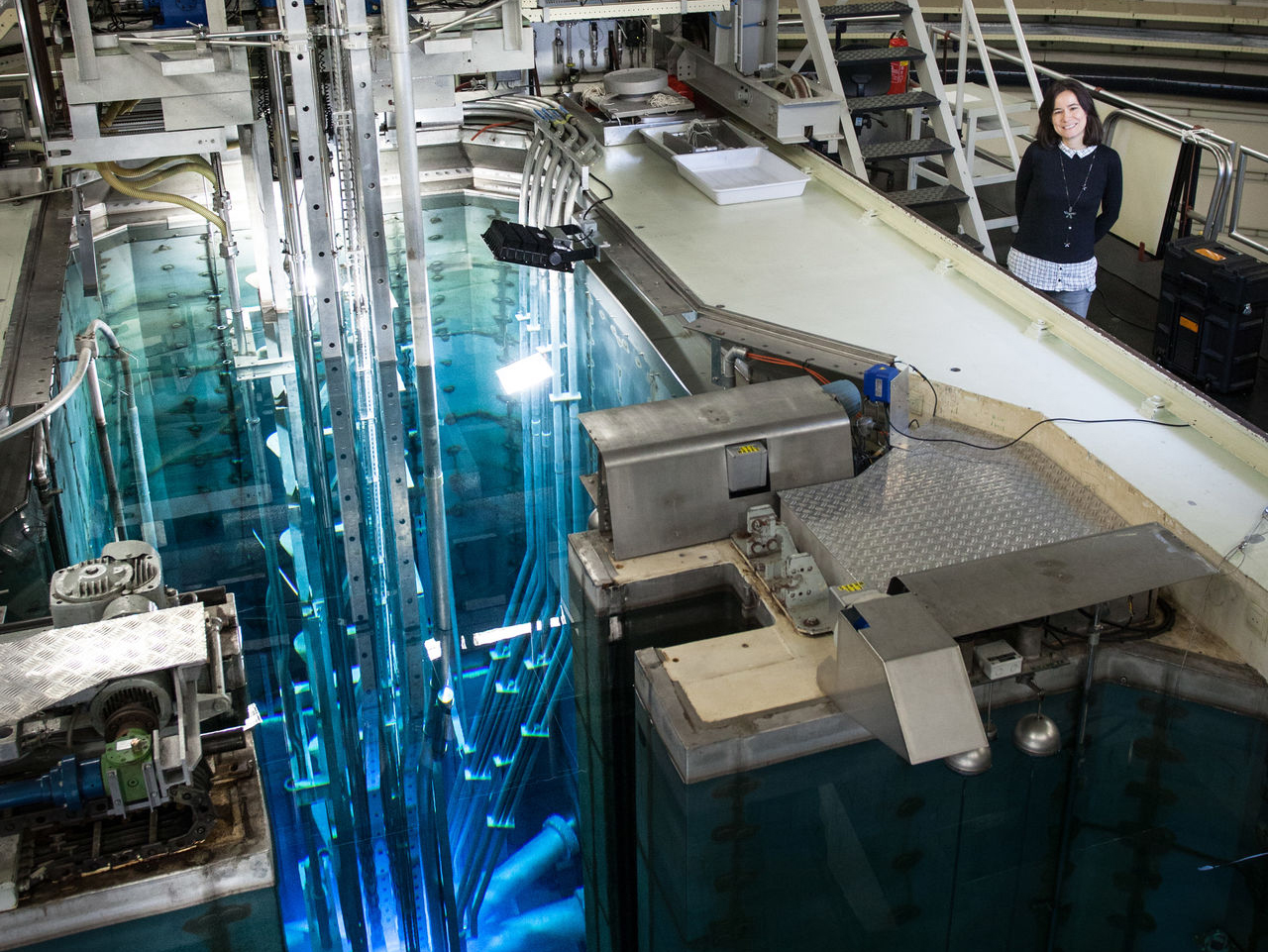The Netherlands is at the forefront in the development of a new method for cancer treatment involving microspheres with radioactive holmium-166. Researchers from TU Delft recently ameliorated the fabrication method of these spheres, allowing patients abroad to be treated with holmium.
Dr Antonia Denkova designed a special new sample holder to irradiate holmium-165. (Photo: TU Delft)
Radioisotope holmium-166 decays so quickly that it is a challenge to get the activated material from the nuclear reactor to the hospitalised patient in time. Delft researchers, in collaboration with colleagues from Radboud Medical Centre and a company called Quirem Medical, conceived of a way to load special little spheres as thick as a hair with more radioactivity than was previously possible. The radioisotope-containing spheres were used for the first time last week in Italy in a liver cancer patient.
“The microspheres are activated in a new flexible irradiation facility that was recently developed by TU Delft’s Reactor Institute Delft (RID),” says the head of the research project, Dr Antonia Denkova. “We designed a special new sample holder in which holmium-165 can be irradiated. The new irradiation chamber allows the spheres to be irradiated to a high level of radioactivity without damaging the biodegradable envelope with gamma radiation.”
The new treatment method is not being used in the Netherlands
“The microspheres can now be made twice as radioactive, and there is thus a longer window of time to get the end product to the hospital where it can be administered to the patient,” states RID director Dr Bert Wolterbeek. “The time window has increased by about 25 to 26 hours.”
Until recently, the spheres that were activated in Delft could only be used in neighbouring countries. “They have been used to treat several liver cancer patients in Germany, for instance,” confirms Dr Frank Nijssen of Radboud Medical Center who was also involved, and who has been working on holmium-166 spheres for about 20 years now. It wasn’t possible to export the spheres further away because of the rate of radioactive decay. “But thanks to Delft’s new production method, Mediterranean countries are also within reach now. And we see that reactors worldwide are interested in copying the production method.”
Ironically though, while the Netherlands may be at the forefront of the development of this new treatment method, it is not being used in the Netherlands itself. “Health insurance companies do not reimburse this type of treatment,” says Nijssen. “Not yet anyway. We have hope that this will change.” Nijssen believes holmium-166 irradiation can be a promising technique in combination with other treatments, such as proton therapy.
Do you have a question or comment about this article?
tomas.vandijk@tudelft.nl


Comments are closed.